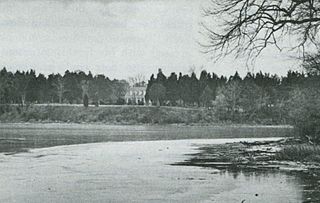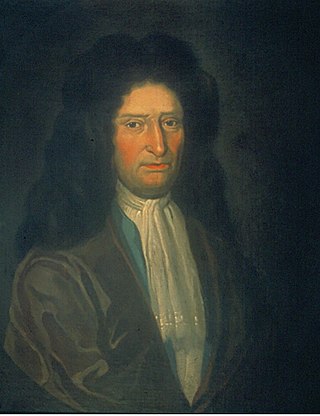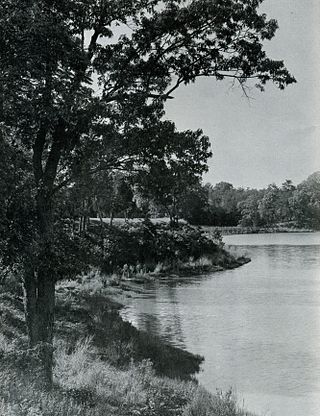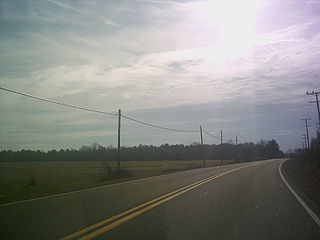Related Research Articles

Westmoreland County is a county located in the Northern Neck of the Commonwealth of Virginia. As of the 2020 census, the population sits at 18,477. Its county seat is Montross.

Montross is a town in Westmoreland County, Virginia, United States. The population was 553 at the 2020 census. It is the county seat of Westmoreland County. Located in the historic Northern Neck of Virginia, Montross is near the George Washington Birthplace National Monument and the Stratford Hall Plantation. The town's slogan is return to the village.

The Northern Neck is the northernmost of three peninsulas on the western shore of the Chesapeake Bay in the Commonwealth of Virginia. The Potomac River forms the northern boundary of the peninsula; the Rappahannock River demarcates it on the south. The land between these rivers was formed into Northumberland County in 1648, prior to the creation of Westmoreland County and Lancaster County. The Northern Neck encompasses the following Virginia counties: Lancaster, Northumberland, Richmond, King George and Westmoreland; it had a total population of 50,158 as of the 2020 census.

The George Washington Birthplace National Monument is a national monument in Westmoreland County, Virginia, at the confluence of Popes Creek and the Potomac River. It commemorates the birthplace location of George Washington, a Founding Father and the first President of the United States, who was born here on February 22, 1732. Washington lived at the residence until age three and later returned to live there as a teenager.

Stratford Hall is a historic house museum near Lerty in Westmoreland County, Virginia. It was the plantation house of four generations of the Lee family of Virginia. Stratford Hall is the boyhood home of two Founding Fathers of the United States and signers of the Declaration of Independence, Richard Henry Lee (1732–1794), and Francis Lightfoot Lee (1734–1797). Stratford Hall is also the birthplace of Robert E. Lee (1807–1870), who served as General-in-Chief of the Confederate States Army during the American Civil War (1861–1865). The Stratford Hall estate was designated a National Historic Landmark in 1960, under the care of the National Park Service in the U.S. Department of the Interior.

Colonel Robert Carter I was a planter, merchant, and government official and administrator who served as Acting Governor of Virginia, Speaker of the Virginia House of Burgesses, and President of the Virginia Governor’s Council. An agent for the Northern Neck Proprietary, Carter emerged as the wealthiest Virginia colonist and received the sobriquet “King” from his contemporaries connoting his autocratic approach and political influence. Involved in the founding of the College of William and Mary, he acquired at least 300,000 acres and engaged one thousand enslaved laborers on fifty plantations.

Colonel Thomas Lee was a planter and politician in colonial Virginia, and a member of the Lee family, a political dynasty. Lee became involved in politics in 1710, serving in both houses of the Virginia General Assembly, and also held important positions as Naval Officer for the Northern Potomac Region and agent for the Northern Neck Proprietary. After his father died, Lee inherited thousands of acres of land as well as enslaved people in then-vast Northumberland and Stafford Counties in Virginia as well as across the Potomac River in Charles County, Maryland. These properties were developed as tobacco plantations. Northumberland County was later subdivided, so some of Lee's properties were in modern Fairfax, Fauquier, Prince William and Loudoun Counties as well as the counties in the modern Northern Neck of Virginia.

Philip Corbin Lee (1681–1744), although born to the prominent Lee family of Virginia became a planter in Maryland, as well as naval officer and served in both houses of the Maryland General Assembly. He is sometimes considered the forebear of the Maryland or Blenheim Lees, although that manor house was built by his successors. He is not to be confused with his nephew Philip Ludwell Lee, the eldest son of his brother Thomas Lee, who built Stratford Hall in Westmoreland County, Virginia.

Colonel Richard Lee II was an American planter, politician and military officer from Northumberland County, Virginia who served in both houses of the Virginia General Assembly and was captured during Bacon's Rebellion.

Richard Lee I was the first member of the Lee family to live in America. Poor when he arrived in Virginia in 1639 on a ship with the colony's newly reappointed governor and the woman who became his future wife, by the time of his death, Lee may have been both the Virginia Colony's wealthiest inhabitant as well as its largest landholder. Lee had a varied career, for in addition to several important government and military posts, he became a merchant, planter and politician who served one term in the Virginia House of Burgesses as well as managed to negotiate several major political upheavals—both successfully and to his economic advantage.

Col. Henry Lee II (1730–1787) of Alexandria, Westmoreland, Virginia Colony, was an American planter, soldier, and politician, the father of Henry "Light-Horse Harry" Lee III, and grandfather of Robert E. Lee.


Westmoreland State Park lies within Westmoreland County, Virginia. The park extends about one and a half miles along the Potomac River and covers 1,321 acres. The Horsehead Cliffs provide visitors with a panoramic view of the Potomac River, and lower levels feature fossils and beach access. The park offers hiking, camping, cabins, fishing, boating and swimming, although mechanical issues have kept the swimming pool closed since 2021. Located on the Northern Neck Peninsula, the park is close to historical sites featuring earlier eras: George Washington's birthplace and Stratford Hall, the birthplace of Robert E. Lee.

Popes Creek is a small tidal tributary stream of the Potomac River in Westmoreland County, Virginia. The George Washington Birthplace National Monument lies adjacent to Popes Creek estuary.

Lerty is an unincorporated community in Westmoreland County, in the U. S. state of Virginia.
Mattox Creek is a tributary of the Potomac River in the Washington District of Westmoreland County, Virginia, near the colonial stagecoach stop of Oak Grove. The creek is 13.9 miles (22.4 km) long, and the lower 3 miles (5 km) of the creek is navigable. It lies between, and only minutes from, the birthplaces of George Washington and James Monroe.

Henry Corbin was an emigrant from England who became a tobacco planter in the Virginia colony and served in both houses of the Virginia General Assembly, in the House of Burgesses representing Lancaster County before the creation of Middlesex County on Virginia's Middle Neck, then on the Governor's Council.

Hannah Harrison Ludwell Lee was an American colonial heiress and the wife of Colonel Thomas Lee. A granddaughter of Philip Ludwell and Benjamin Harrison II, she was a prominent figure within the American gentry. She grew up at Green Spring Plantation, her family's home in James City County. Upon her marriage, she became a member of the Lee family, bringing a large dowry and social prestige to the family. With her dowry, she and her husband built Stratford Hall, the family seat of the Lees.
References
- The Virginia Genealogist, 1969, Vol 13, 32-36
38°07′44″N76°48′23″W / 38.12889°N 76.80639°W
